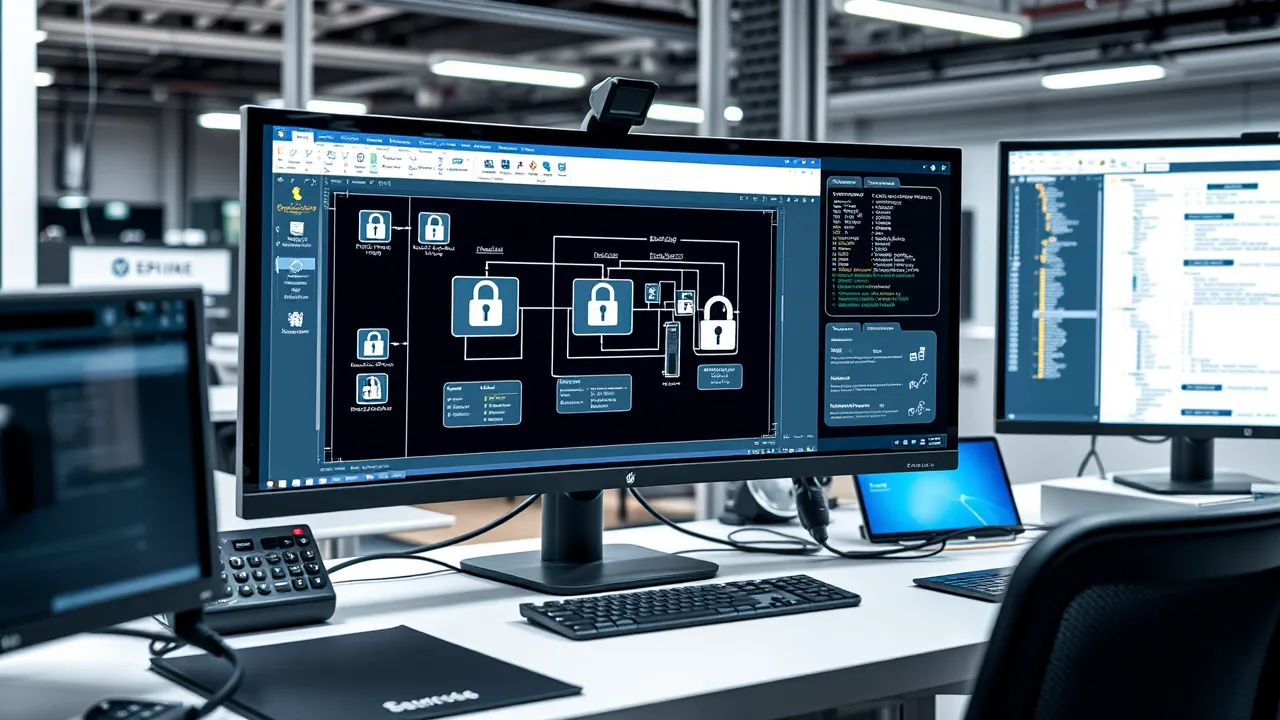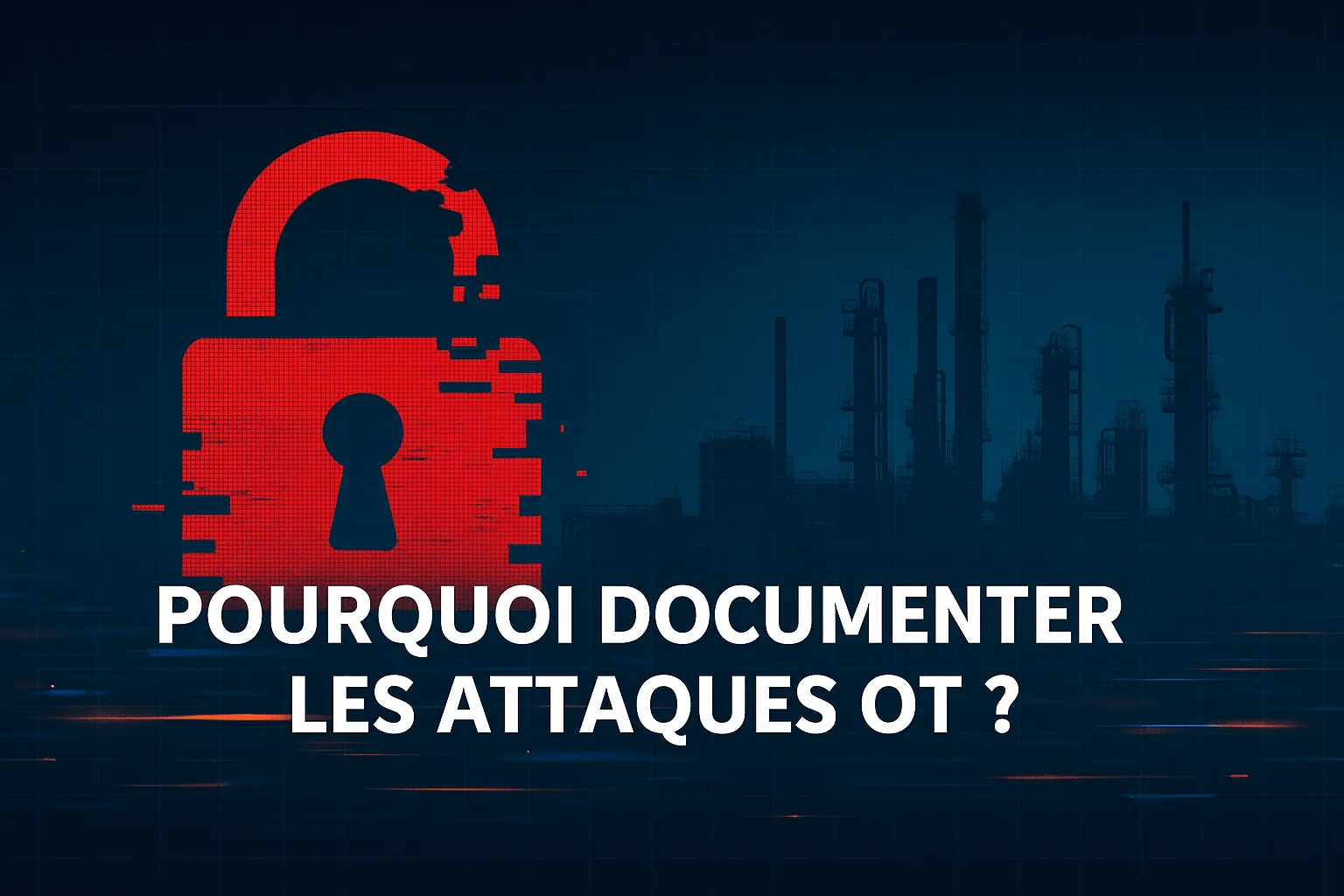
How to design an ideal architecture for your industries?
Industrial cybersecurity is no longer optional. With the rise of cyber threats, every industry must build an architecture adapted to its OT systems. An effective strategy relies on a detailed analysis of flows, assets, and risks. This article guides you in designing a robust, scalable, and standards-compliant industrial cybersecurity architecture for 2025.
Why is an industry-specific cybersecurity architecture essential?
The surge of cyberattacks targeting OT
Industrial systems (OT) have become prime targets. Their increasing connectivity exposes them to new risks. Once isolated, they are now interconnected with IT networks. This convergence creates new exploitable vulnerabilities.
Cybercriminals exploit vulnerabilities specific to industrial environments, such as unencrypted protocols, lack of network segmentation, and hardware obsolescence: a fertile ground for attacks. The ANSSI 2024 report notes a 57% increase in OT incidents in just one year.
Ransomware attacks target SCADA systems, PLCs, and HMI interfaces. Some campaigns, such as TRITON, even target safety systems. The goal is clear: stop production or cause physical damage.
Tangible impacts on production, safety, and the environment
The consequences of an OT cyberattack are numerous. A paralyzed plant results in major financial losses. In 2023, the attack on a European oil site led to two weeks of logistical disruption.

Some intrusions can endanger human life. Tampering with sensor or actuator data can cause industrial accidents. The environment can also be affected: chemical leaks, overloads, or critical system outages.
Availability then becomes the top priority. Organizations must ensure that their infrastructures can withstand, defend, and restart quickly.
The limits of traditional IT approaches in OT
Directly applying IT methods to OT is risky. Operational constraints are very different. OT requires constant availability and cannot tolerate interruptions.
Automatic updates or traditional antivirus software are often incompatible with older or proprietary equipment. Some critical systems can only be restarted after a full production cycle validation, making intrusive interventions dangerous.
Moreover, OT cybersecurity must deal with real-time protocols and specific interfaces. Traditional IT solutions lack both the granularity and the industrial context knowledge required.
Finally, the absence of software agents on OT equipment prevents the use of traditional IT monitoring tools. In IT environments, these agents typically allow:
- to collect event logs,
- to launch security actions (scanning, patching, alert reporting),
- to monitor workstations and servers in real time.
But in OT, their deployment is often impossible because the equipment:
- does not run on a standard operating system (Windows/Linux),
- is extremely sensitive to overloads or software modifications,
- must guarantee real-time operation without interruption or reboot.
Therefore, agentless technologies such as an IDS probe must be used: they rely on passive analysis of network flows to detect anomalies, without directly modifying or interacting with equipment. This solution provides appropriate visibility without compromising operational stability.
Steps to design an industrial cybersecurity architecture
OT cybersecurity mapping and assessment
Before implementing cybersecurity solutions, knowing the onsite architecture is crucial. This requires an asset mapping of OT to identify all connected devices: PLCs, HMIs, sensors, SCADA systems, field networks.

The cybersecurity assessment must include the analysis of configurations, protocols used, and known vulnerabilities. Physical, logical, and human dependencies must also be included.
Classify assets by degree of criticality. Analyze real flows, not just documentation. Use passive analysis tools to avoid disrupting systems in production.
This visibility is crucial to understand weak points, interdependencies, and to define security priorities. Without a reliable inventory, no protection strategy can be coherent.
Contact Dative to carry out your OT audits and mappings. Our experts support you in the field, with tools tailored to OT.
Defining zones and conduits according to critical flows
The zones and conduits approach from IEC 62443 consists of segmenting the industrial network into functional zones.
Each zone groups equipment with the same security needs. Conduits are communication paths between zones. They must be secured and filtered.
For example, a "supervision" zone can be isolated from the "PLC" zone. Data transfers then pass through a conduit controlled by a firewall and protocol inspection.
This method limits the lateral spread of attacks and enables effective containment in case of incident.
Choosing suitable technologies (firewalls, proxy, DPI…)
To effectively secure an OT architecture, technologies compatible with industrial constraints must be chosen.
Industrial firewalls are essential to filter traffic within the OT network. Unlike traditional IT firewalls, they integrate industrial protocols (Modbus, DNP3, OPC-UA…) and allow filtering at the application level.
DPI (Deep Packet Inspection) is a key component. It reads the content of industrial frames, detects malicious or non-compliant commands, without disrupting real-time traffic. DPI is particularly useful for identifying behavioral deviations in SCADA systems.
Industrial IDS/IPS probes analyze network traffic for abnormal behavior, while taking OT specifics into account. Some IDS rely on OT signature databases, others on behavioral analysis.
Passive agents can also play a key role. Placed on mirror ports (SPAN) or via network TAPs, they collect data without disrupting OT traffic. These agents can detect new assets, monitor flows, and spot configuration changes.
All these technologies must be integrated into an architecture that is redundant, resilient, and supervised in real time. The choice of these tools must not be made in isolation, but aligned with the asset inventory, critical flows, and the organization’s cybersecurity maturity level.
Contact our experts to select the most suitable tools for your industrial infrastructure.
Business continuity plan and incident response
A solid architecture includes a business continuity plan. In case of attack, you must be able to restart safely.
This plan relies on several pillars:
- regular backups (with restoration tests),
- secure restart procedures,
- up-to-date and accessible documentation,
- a crisis communication plan.
Incident response must be organized: teams defined, roles assigned, analysis tools ready to use. Setting up a dedicated OT SOC (Security Operation Center), even outsourced, is a major asset.

Regularly test your systems with crisis exercises. Train your teams to respond to ransomware or SCADA compromise. Without tests, the plan remains theoretical.
Industrial cybersecurity architecture: 4 key standards to know
IEC 62443: The essential standard for industrial systems
This standard is specifically designed for industrial environments. It proposes a strategy based on security levels (SL).
It imposes requirements for components (PLCs, software) and whole systems. It also recommends the zones and conduits approach, and defines clear roles between operators, suppliers, and integrators.
IEC 62443 is essential for any company seeking to sustainably structure its OT cybersecurity.
ISO/IEC 27001: A global framework for information security
This standard from IT complements IEC 62443. It defines an Information Security Management System (ISMS).
It requires risk analysis, policy definition, and regular internal audits. Applied to OT, it enables the integration of cybersecurity into the company’s overall governance.
NIS2 and GDPR: Regulatory obligations to comply with
The NIS2 directive strengthens obligations for critical sectors: energy, industry, transport, etc. It requires fast incident notification and regular risk analysis.
GDPR concerns personal data, including that from sensors connected to OT. Their protection and traceability must be ensured. In 2024, several industrial sites were fined for lack of sufficient technical measures.
Secure by Design: Integrating security from the design stage
This approach plans for security from the development of industrial systems. This means: secure protocols, restricted access, upgradability, native logging.

It also applies to integration or migration projects. Integrating security early helps reduce reverse-engineering costs and minimize the attack surface.
Conclusion
Designing an industrial cybersecurity architecture is not something to improvise. It must rely on a rigorous methodology, adapted technologies, and strict adherence to standards.
In the face of OT cybersecurity challenges and growing industrial risks, it is vital to act without delay. A well-designed architecture ensures resilience, compliance, and long-term sustainability of industrial operations.
The key: anticipate, segment, protect, detect, and respond. And above all, don’t wait for the incident to act.
Contact Dative to design an industrial cybersecurity architecture tailored to your challenges.




